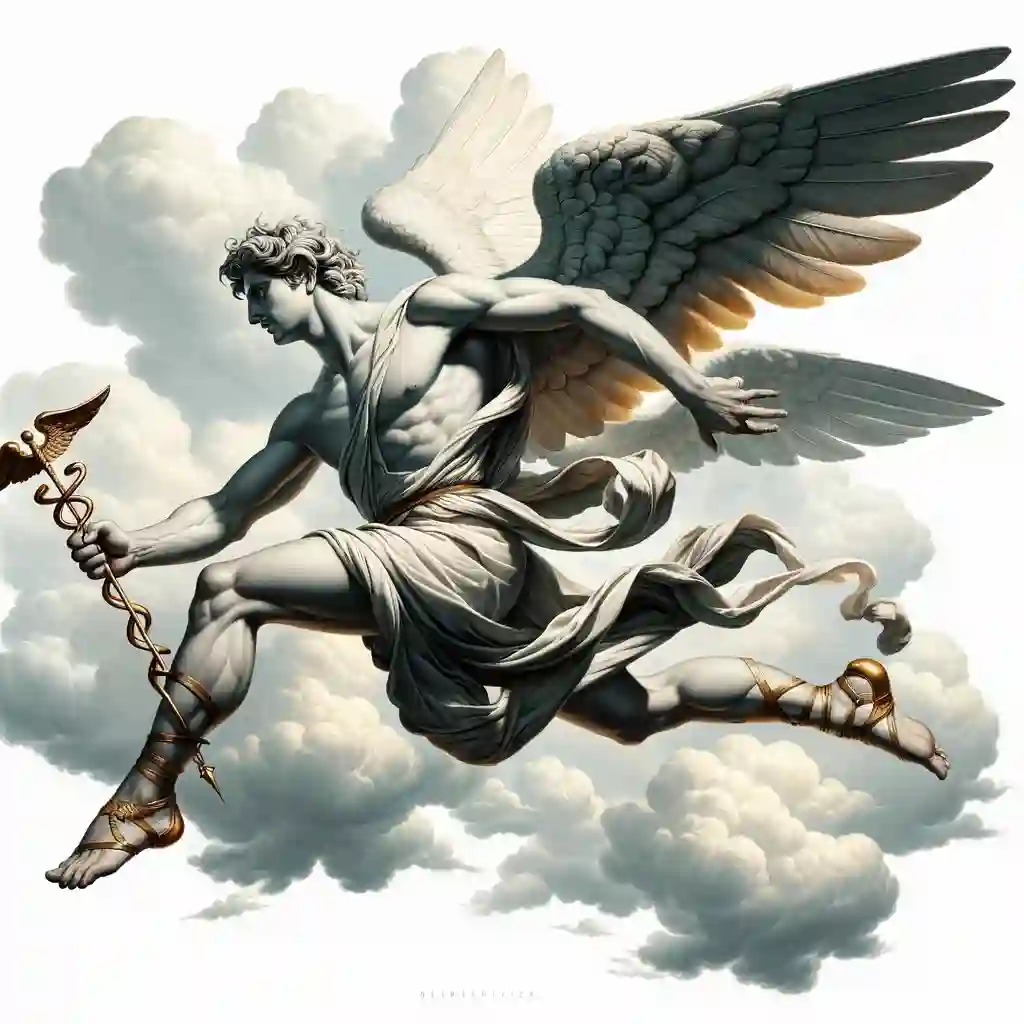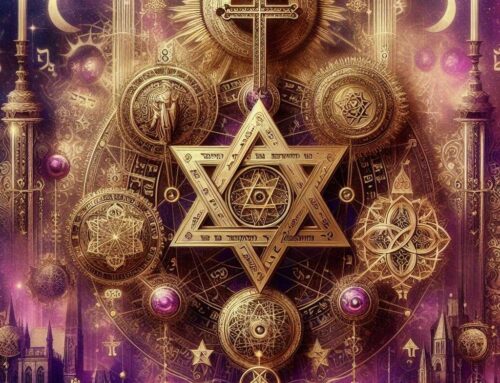Contents
Introduction
Rosicrucian Hermeticism, an enigmatic blend of mystical philosophies, stands at the crossroads of Western esoteric tradition. This spiritual path integrates the principles of Hermeticism, a wisdom tradition dating back to ancient Egypt, with the mystical and secretive teachings of the Rosicrucian Order. These traditions together form a rich tapestry of metaphysical concepts, focusing on the universal laws, the process of spiritual rebirth, and the pursuit of Gnosis — the knowledge of spiritual truths.

At its heart, Hermeticism is a path to spiritual enlightenment, weaving together elements of mysticism, alchemy, astrology, and Kabbalistic teachings. This tradition holds that the universe is a complex system of correspondences and that by understanding these, one can gain insight into the divine nature of existence and the soul’s journey towards unification with the all-encompassing whole. Through the exploration of its historical origins, core principles, symbolism, and practices, this article will delve into the depths of Hermeticism, uncovering its enduring relevance and its capacity to guide individuals on a transformative spiritual journey.
Historical Origins and Influences
The Ancient Foundations
Hermeticism finds its roots in the cross-pollination of the mystical Hermetic texts attributed to Hermes Trismegistus and the Christian mystic tradition of the Rosicrucian order. These traditions converge to form a unique spiritual path that has influenced Western esoteric thought for centuries (1).
The Renaissance Revival
The Renaissance period marked a significant revival of Hermetic and Rosicrucian ideals, fueled by a newfound interest in ancient wisdom. This era saw the emergence of influential figures and texts that contributed to the spread of Hermeticism across Europe.
The European Order of the Rosicrucians’ modern history is based on a 17th-century manifesto and the spread of ideas throughout Europe, with the first solid evidence found in Germany in the XVIII century (2).
The Role of Secret Societies
Secret societies played a crucial role in preserving and transmitting Rosicrucian Hermetic knowledge. These groups, often operating in secrecy, provided a sanctuary for the study and practice of esoteric teachings.
Core Philosophical Principles
The Principle of Correspondence
A foundational concept of Hermeticism is the principle of correspondence, encapsulated by the axiom “As above, so below; as below, so above.” This principle highlights the interconnectedness of the universe and the mirroring of the macrocosm within the microcosm.
The Pursuit of Gnosis
Gnosis, or spiritual knowledge, is a central pursuit in Hermeticism. This knowledge is not merely intellectual but experiential, leading to a profound understanding of the divine nature of existence.
The Path of Alchemical Transformation
Alchemical transformation, both literal and symbolic, is a vital aspect of the Hermetic tradition. The alchemical process symbolizes the spiritual journey towards purification, enlightenment, and the ultimate union with the divine.
Enlightenment is the ability to use one’s own understanding without another’s guidance, resulting in man’s emergence from self-imposed nonage (3).
Symbolism and Mystical Interpretations
The Language of Symbols
Hermeticism employs a rich tapestry of symbols to convey spiritual truths. These symbols, ranging from alchemical sigils to astrological symbols, serve as keys to unlocking deeper levels of understanding.
Archetypes can be understood as culturally determined symbolic forms, organizing and structuring non-cognitive mental aspects of human life, rather than biologically inherited predispositions (4).
The Esoteric Interpretation of Sacred Texts
Sacred texts, including the Rosicrucian manifestos and Hermetic writings, are interpreted esoterically within the tradition. This approach reveals hidden meanings and spiritual teachings encoded within the texts.
The Significance of Ritual
Rituals, both personal and collective, are integral to Rosicrucian Hermetic practice. These rituals facilitate spiritual experiences, serve as acts of devotion, and reinforce the principles of the tradition.
Conclusion: The Enduring Legacy of Rosicrucian Hermeticism
Rosicrucian Hermeticism, with its rich history, profound philosophical principles, and transformative practices, continues to inspire seekers of spiritual wisdom. As we navigate the challenges of the modern world, the timeless teachings of Rosicrucian Hermeticism offer guidance, hope, and a path towards enlightenment. By embracing the principles of this ancient tradition, we can uncover the mysteries of the universe and our place within it, achieving a deeper connection with the divine.
Embark on Your Journey with the Hermetic Academy
Discover the ancient wisdom of Rosicrucian Hermeticism and embark on a transformative spiritual journey with the Hermetic Academy. By joining our community, you gain access to a wealth of knowledge, practical teachings, and the support of like-minded seekers. Whether you are new to the path or a seasoned practitioner, the Hermetic Academy offers a comprehensive curriculum designed to guide you towards spiritual enlightenment. Embrace the timeless teachings of Rosicrucian Hermeticism and unlock your potential for divine union and cosmic harmony. Join us today and take the first step on your initiatory journey towards spiritual fulfillment.
FAQ rosicrucian hermeticism
1. What is Rosicrucian Hermeticism?
Rosicrucian Hermeticism is an esoteric tradition that combines the mystical teachings of Rosicrucianism and Hermeticism, emphasizing spiritual growth, alchemical transformation, and the pursuit of gnosis.
2. Who was Hermes Trismegistus?
Hermes Trismegistus is a legendary figure credited with authoring the Hermetic corpus, a series of texts that form the foundation of Hermetic philosophy. He is often depicted as a wise sage who possessed profound spiritual knowledge.
3. What is the significance of alchemy in Rosicrucian Hermeticism?
In Hermeticism, alchemy is not only the practice of transforming base metals into gold but also symbolizes the spiritual process of purifying the soul and achieving enlightenment.
4. How can one practice Rosicrucian Hermeticism today?
Practicing Hermeticism today involves more than mere study; it is an initiatory journey preserved within authentic mystery schools such as the Hermetic Academy. This path is about transmission through experience and engagement in the living traditions of meditation and ritual practice, enabling personal spiritual development and growth.
5. What is the goal of Rosicrucian Hermeticism?
The goal of Hermeticism is the attainment of spiritual enlightenment, the realization of one’s divine nature, spiritual evolution, and the harmonious union with the cosmos,
References:
(1) Rubenstein, E. (2023). Magic: The Legacy of the Rosicrucians. Hermetic World, Paphos.
(2) D., P. (2020). MODERN HISTORIOGRAPHY OF THE EUROPEAN ORDER OF ROSENCRUTZERS IN THE LIGHT OF THE STUDY OF «WESTERN ЕSOTHERISM». Humanitarian paradigm. https://doi.org/10.33842/2663-5186-2019-2-1-95-104.
(3) Kant, I. (2015). What is Enlightenment. . https://doi.org/10.1017/9781787440609.002.
(4) Pietikainen, P. (1998). Archetypes as symbolic forms. Journal of Analytical Psychology, 43, 325-343. https://doi.org/10.1111/1465-5922.00032.





